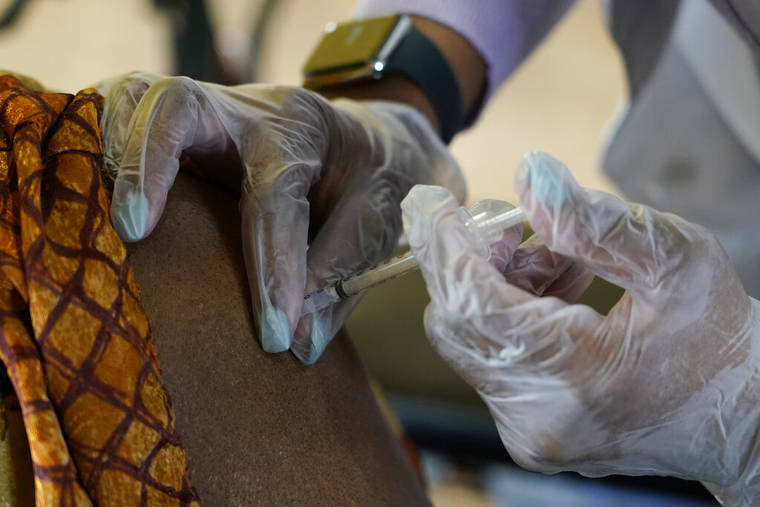PHOENIX — As the U.S. goes through the most lethal phase of the coronavirus outbreak yet, governors and local officials in hard-hit parts of the country are showing little willingness to impose any new restrictions on businesses to stop the spread.
And unlike in 2020, when the debate over lockdowns often split along party lines, both Democratic and Republican leaders are signaling their opposition to forced closings and other measures.
Some have expressed fear of compounding the economic damage inflicted by the crisis. Some see little patience among their constituents for more restrictions 10 months into the crisis. And some seem to be focused more on the rollout of the vaccines that could eventually vanquish the threat.
The most notable change of tune came from New York Gov. Andrew Cuomo, a Democrat, who imposed a tough shutdown last spring as the state became the epicenter of the U.S. outbreak.
“We simply cannot stay closed until the vaccine hits critical mass. The cost is too high. We will have nothing left to open,” Cuomo said this week as confirmed infections in the state climbed to an average of 16,000 a day and deaths reached about 170 per day.
In fact, Cuomo said Tuesday that he wants to start opening up theaters and allow indoor dining to return to New York City by launching rapid testing sites.
In Arizona, where the pandemic is raging, Republican Gov. Doug Ducey has been steadfast in his opposition to a statewide mask mandate or the closing of bars, gyms and restaurant dining despite repeated calls from hospital leaders to take such steps.
“If we’re really all in this together, then we have to appreciate that for many families ‘lockdown’ doesn’t spell inconvenience; it spells catastrophe,” Ducey said.
Governors in other hot spots, including Texas, have expressed similar sentiments, while other states are loosening restrictions even as the U.S. death toll closes in on 380,000 and cases top 22.7 million. Deaths nationwide are running at more than 3,200 a day on average.
Minnesota allowed in-person dining to resume this week, and Michigan is set to do the same Friday. Nevada’s rules are set to expire Friday.
Even in states with strict measures in place, such as California, people are flouting the rules. On Monday, as intensive care units in Southern California found themselves jammed with patients, people packed beaches in San Diego to see this week’s high surf, many standing less than 6 feet apart with no masks.
Other Americans have ignored the rules as well. U.S. tourists flocked to Mexico’s Caribbean coast over Christmas and New Year’s, while thousands of University of Alabama football fans crowded into bars Monday night to celebrate the school’s national championship.
About 9 million Americans have received their first shot of the vaccine, according to the Centers for the Disease Control and Prevention, a slow rollout for a campaign that will have to inoculate perhaps 85% percent of the population, or over a quarter-million people, to conquer the outbreak.
On Tuesday, the Trump administration announced planes to speed things up by releasing practically twice as much vaccine, instead of holding large quantities in reserve to make sure that people received the required second dose on time. The practice of holding back doses was spurred by fear of production delays, but officials said they are now confident the supply will be there.
The Trump administration also asked states to immediately start vaccinating other groups lower down the priority scale, including the estimated 54 million Americans 65 and older, as well as younger people with certain health problems. Several states had already begun offering shots to senior citizens over the past few days.
But experts warn that life is unlikely to get back to normal any time soon. Vaccinating enough Americans to stop the virus could take well into the second half of 2021, by some estimates.
“This is probably our most challenging time in the pandemic because the general population is least likely to just hear the same old messages and comply in the same way, but the need for them to do that is at its greatest,” said Dr. Kirsten Bibbins-Domingo, head of epidemiology at the University of California, San Francisco.
California remains an outlier, with most of the state under a strict lockdown that has limited restaurants to takeout and delivery and shuttered hair salons and gyms.
California’s COVID-19 death toll reached 30,000 on Monday. Hospitals in Los Angeles are so swamped that patients on gurneys are being treated in gift shops and parking lots. Officials started urging people to wear masks even at home if they go outside regularly and live with someone elderly or otherwise at high risk.
Anger over the restrictions has led to a recall movement against Democratic Gov. Gavin Newsom that has nearly gathered the 1.5 million signatures needed to put his career to a vote.
Some Californians are escaping by heading to neighboring Arizona, where they can eat and drink at bars and restaurants.
Bartender Raul Amaya, who works at Carly’s Bistro in Phoenix, said he is grateful for the business since it keeps him employed. Everyone, he said, needs a break.
“”I think every time there has been a closure in different states, a lot more influx of different people from different states has come in,” he said. “The only reason I’ve noticed it is they want a drink and we have to ask for ID from everybody. So, I was like ‘Oh, this is a lot of California or Nevada IDs.’”
_____
Watson reported from San Diego. Associated Press writers Ricardo Alonso-Zaldivar and Zeke Miller in Washington; Jennifer Peltz in New York; Christopher Weber and John Antczak in Los Angeles; and Don Thompson in Sacramento contributed to this report.


